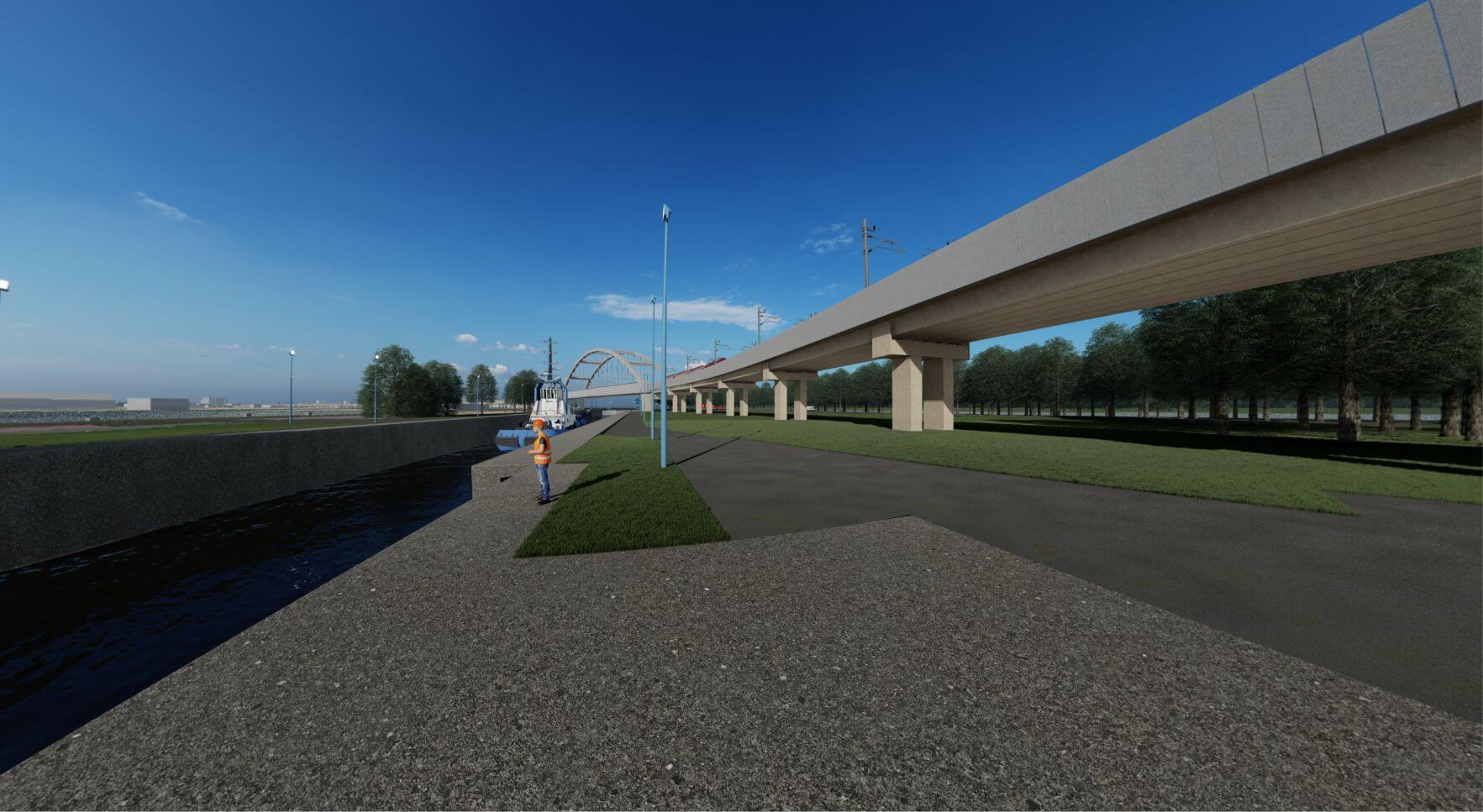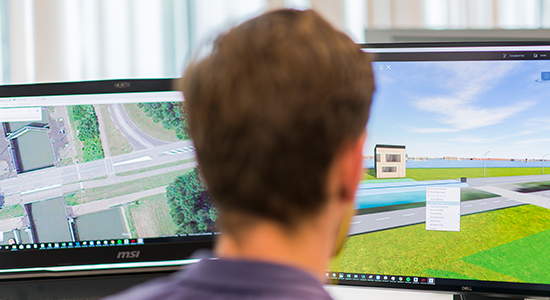How is it going on the… Theemseweg route project?
We asked digital engineer Anass Fizazi (27) from Infranea about the state of play of the Theemseweg route project, and what his contribution is to making this project a success.
Why did you choose Infranea back in the day?
I studied Civil Engineering at Avans Hogeschool in ‘s-Hertogenbosch. When I graduated two years ago, I had the choice straightaway between five employers. I chose Infranea. Primarily because I felt much more enthusiasm at Infranea, and I saw that the people here were valued. There was less of a personal approach in the other interviews.
What exactly do you do at Infranea?
I started as a BIM coordinator and 3D modeller for Parkway 6. Then as an infrastructure designer for the ‘De Entree’ project (Stationsplein Amsterdam). I am currently 4D coordinator for the Theemsweg route, where I also do the BIM coordination.

Nederland, infranea, visualisatie
What is a typical working day for you?
9 times out of 10, you’ll find me in the portacabin on the construction site. I am currently sitting next to 30 metre high scaffolding. The scaffolding is there to screw posts into the ground. I can feel that here at my workstation, believe me (laughs). Actually, no two working days are the same for me. The common thread running through my role is to be the connecting link. Just call me a “connector”. I have to consult a lot and test models.
What is your specialism?
I am a BIM coordinator in 3D, 4D and 5D. A 4D coordinator links the planning to the BIM model in 2D or 3D, and flags up any intersections, but I go one step further. I link the planning to metadata of objects, to which interesting information can be generated. For example, predictions can be made regarding the quantities of cubic metres of concrete required in a given phase of the work. In addition, the logistics planning can be visualised to identify risky intersections. I use Synchro Pro software to do this.
What are the major challenges?
Various elements come together in the process coordination: many disciplines, different software and of course a very diverse team. My task is to make sure that works for everyone. To do that, I need the right input from all those people. So then you have to steer from the front of the process to get the last link closed at the back. One challenge in that respect is, for example, that everyone is not physically in the same place, which makes cooperation a little trickier. Of course, you also need to defend your own corner in a project organisation like this one. Perhaps the biggest challenge is getting people to see the added value of BIM. That still demands a lot of effort. BIM is still quite new in the infrastructure world, it is not yet the standard.
How do you get around that?
First of all, I stood my ground in the process team. Then I had to convince all parties of the added value of BIM. Don’t forget that BIM requires effort, and you don’t immediately see a result at first. So you need to convey a vision and inspire people, in order to achieve cooperation.
Where did you learn that?
To be honest, they don’t teach you that at school. You don’t really get trained for that aspect of the job. It’s more about soft skills, which is more linked to your personality I think. You need to carry on regardless and keep looking for solutions. That requires creativity. Here at Infranea I am fortunate to receive a lot of feedback from colleagues, which gives you new insights and new ways to achieve your BIM goals.
What is the state of play of the Theemsweg route?
As regards the Infra aspect, we’re nearly half way there. That means everything that goes on under the railway bridge, such as widening and moving roads, for example. As for the civil engineering aspect, that is the structural part with a railway bridge of approximately 4 km. Those works have only just started. The official green light has been given and the heavy equipment is arriving on-site. The concrete structures, including 2 steel arched bridges, should be ready by 2020.
What have you learned from this project that you can apply to other projects?
Above all, learning to work independently and taking the bull by the horns. I have already learned a lot here from my coordinating role, so I can follow a lot of the process-related aspects from close by. You get a helicopter view, as it were, to help steer from the process team. In addition, Jaap De Boer (operational manager of Infranea, ed.) comes to work here every 2 weeks for half a day. His experience and ideas also help me a lot.
Any tips for recent graduates who want to follow in your footsteps?
What helped me a lot was adopting a very curious attitude. If I can’t immediately find an answer or method, I keep asking. You also need to realise that your studies don’t adequately prepare you for working in 3D. So additional training is a must. We have that opportunity at Infranea. Colleagues come to explain a topic themselves, or you can follow a course. Of course, you need to take the initiative to do that yourself.
What is your dream project?
The Theemsweg route project is already a very challenging project (laughs). It is highly complex. We are working on a petrochemical site full of intersections, pipes and risks. So this is already a high-end project for me. It would be interesting to do projects abroad and see how they approach things there. I could then pass on that experience to my colleagues here in the Netherlands and Belgium.
Will you become our new colleague? Discover our career opportunities.
19/06/2019



